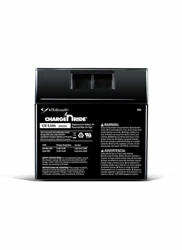Loading ...
Loading ...
Loading ...

• 8 •
NOTE: This is a lead-acid battery and does not retain a memory like
a NiCad battery. Therefore you do not need to completely discharge
the battery before you recharge it. In fact completely discharging the
battery will cause poor performance and premature failure.
5.4 Charge the battery before storing the vehicle. Storing the battery
in a discharged state will permanently damage the battery.
5.5 Charge the battery at least once a month, even if the vehicle is not
being used.
5.6 Always disconnect and remove the battery from the vehicle before
storing. Battery leakage and corrosion can damage the vehicle
and battery connectors.
5.7 Do not store the battery in temperatures above 75° F (24° C)
or below -10° F (-23.3° C). Batteries that have less than a 40%
State-of-Charge will freeze at 0° F (-17.8° C) and fully discharged
batteries will freeze at approximately 20° F (-6.7° C).
6. BATTERY DISPOSAL
6.1 This battery is a non-spillable sealed lead-acid battery. It must be
recycled or disposed of in an environmentally sound manner.
6.2 Do not dispose of a lead-acid battery in a re. The battery may
explode or leak.
6.3 Do not dispose of a lead-acid battery in your regular household
trash. The incineration, putting in a landll or mixing of sealed
lead-acid batteries with household trash is prohibited by law.
6.4 Protect the environment by not disposing of this product with
household waste. Check with your local authority for recycling
advice and facilities.
6.5 Return an exhausted battery to a federal or state approved
lead-acid battery recycler or a local seller of automotive
batteries. Contact your local waste management ofcials for
other information regarding the environmentally sound collection,
recycling and disposal of lead-acid batteries.
Loading ...
Loading ...
Loading ...
